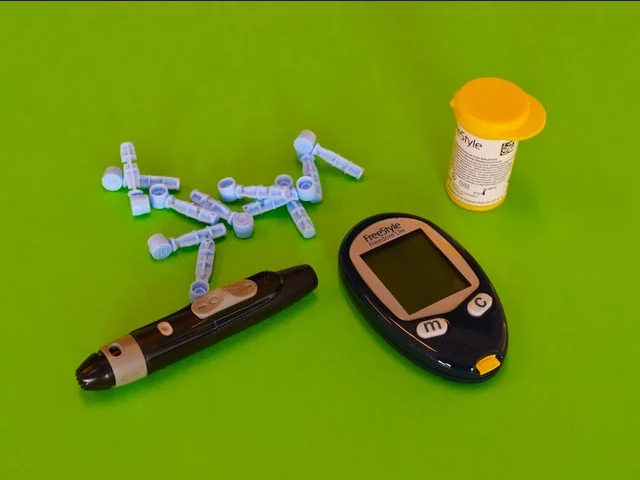
The artificial pancreas developed by scientists at the University of Cambridge has undergone successful….CONTINUE READING
clinical trials. The gadget, which is driven by an algorithm created at the University of Cambridge, increased the amount of time patients spent in the target range for glucose and decreased the amount of time patients spent experiencing high glucose by an order of magnitude compared to usual therapy.
Type 2 diabetes affects an estimated 415 million individuals globally and results in yearly global health care expenses of $760 billion. Over 4.9 million individuals in the UK have diabetes, with 90% having type 2 diabetes; this is predicted to cost the NHS £10 billion annually, according to Diabetes UK.
A rise in blood glucose levels is the hallmark of type 2 diabetes. In healthy individuals, insulin is secreted to regulate blood sugar levels, but in those with type 2 diabetes, insulin production is impaired. Long-term exposure may lead to health issues including vision loss, renal failure, nerve damage, and even heart disease.
The illness is normally controlled by a mix of lifestyle modifications — healthier nutrition and greater exercise, for example – and medicine, with the objective of maintaining glucose levels low.
The University of Cambridge’s Wellcome-MRC Institute of Metabolic Science has created an artificial pancreas that may aid with glucose homeostasis. Combining a commercially available glucose monitor and insulin pump with the team’s own custom software, called CamAPS HX, creates the gadget. An algorithm inside this software calculates the dose of insulin needed to keep blood sugar levels steady.
Earlier work by the same team demonstrated the efficacy of an artificial pancreas powered by a similar algorithm in treating patients with type 1 diabetes, including both adults and children. They have also successfully trialed the device in individuals with type 2 diabetes who need renal dialysis.
The group published their first trial of the device in a larger group of people with type 2 diabetes in the journal Nature Medicine (not requiring kidney dialysis). This new version of the artificial pancreas is a totally closed loop system, unlike the artificial pancreas used for type 1 diabetes, in which patients must inform the device that they are going to eat in order to alter insulin levels, among other things.
Researchers gathered their sample size of 26 patients from the Wolfson Diabetes and Endocrine Clinic at Addenbrooke’s Hospital (part of Cambridge University Hospitals NHS Foundation Trust) and from a network of general practitioners (GPs) in the area. The patients were split into two groups, with one group receiving the artificial pancreas for eight weeks before switching to the control group’s treatment of several daily insulin injections.
The performance of the artificial pancreas was evaluated in a number of ways. The first indicator was the percentage of time a patient’s glucose level was within the recommended range of 3.9-10.0mmol/L. Patients on the artificial pancreas spent twice as much time as those in the control group (66%) within the ideal range.
The duration of time when glucose levels were more than 10.0mmol/L was another indicator. Chronically elevated blood glucose levels are associated with a greater risk of developing significant consequences. When compared to patients receiving the placebo treatment, those utilizing the artificial pancreas had a 67% reduction in the proportion of time spent with elevated glucose levels.
Average glucose levels declined – from 12.6mmol/L while taking the control medication to 9.2mmol/L when utilizing the artificial pancreas.
Glycated hemoglobin, often known as HbA1c, was also lowered by the app. Hemoglobin, the oxygen-carrying protein inside red blood cells, becomes “glycated” when it binds to glucose in the blood. Measuring HbA1c allows doctors to see how a patient’s average blood sugar levels have changed over the course of many weeks or months. The likelihood of having diabetes-related problems increases when HbA1c levels rise in persons who already have the disease. Average HbA1c levels were 8.7% following the control treatment and 7.3% after utilizing the artificial pancreas.
During the course of the trial, no participants had hypoglycemia, a condition in which blood sugar levels drop dangerously low. An abscess at the pump cannula site required hospitalization for one patient utilizing the artificial pancreas.
Users were pleased with the system’s automated glucose control, and almost nine in ten (89%) said they spent less time than before on diabetes management. Benefits cited by users include reduced reliance on injections and finger-prick testing and more assurance in maintaining healthy blood sugar levels. The potential benefits of improved awareness and monitoring of glucose levels were offset by increased worry about the risk of hypoglycemia and practical annoyances associated with wearing of devices, according to the study authors.
The team has filed the device for regulatory clearance in hopes of making it commercially accessible for use by outpatients with type 2 diabetes, and they want to expand on the results of their current trial by doing a much bigger multicenter study….CONTINUE READING